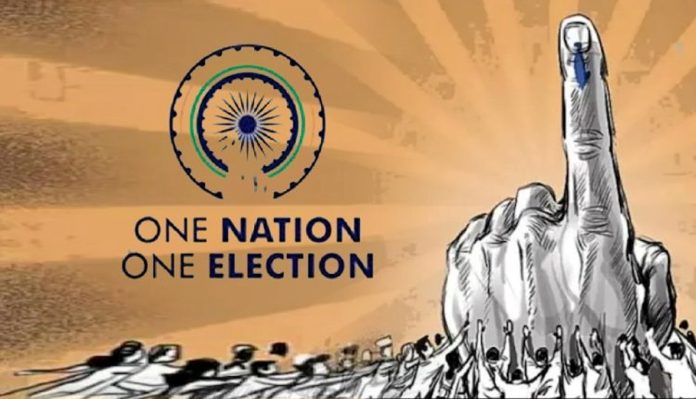The Union Cabinet’s approval of the Kovind Panel report, advocating for simultaneous elections in India, marks a pivotal shift in the country’s political landscape. Popularised as the “One Nation, One Election” policy, this ambitious plan to synchronise national and state elections has drawn attention across political and intellectual spheres. It promises an overhaul of India’s complex electoral process and, if executed as envisaged, could redefine how democracy functions in the world’s largest democratic nation. But while the vision is grand, the path to realising it is fraught with practical challenges and legal implications that deserve scrutiny.
At present, India’s electoral calendar is scattered. The Lok Sabha elections are held every five years, while elections to state assemblies and local bodies take place at different intervals based on the state’s electoral cycle. This leads to a situation where elections are conducted almost every year, with significant disruptions to governance. A scattered election cycle also involves repeated deployment of resources, both administrative and financial, leading to what many describe as an ‘election fatigue.’ Moreover, this constant cycle of electioneering impairs long-term policymaking, as Governments are forced to focus on short-term populism to win elections rather than long-term developmental goals. The financial burden of conducting these elections is massive. The Election Commission of India spends significant sums to ensure free and fair elections in a country of over 900 million eligible voters.
Simultaneous elections will have multiple benefits. According to estimates, conducting a Lok Sabha election costs the exchequer over Rs 60,000 crore, and adding state and local body elections to this cycle only inflates these costs. Holding simultaneous polls would rationalise expenditure by consolidating election activities such as security, logistics, and infrastructure management. Second, its merit is that it would provide a more consistent period of governance. Today, political parties are perpetually in election mode, which encourages short-term promises and discourages difficult but necessary reforms. With synchronised elections, Governments would have more uninterrupted time to implement their agendas. This focus on governance, without the looming pressure of imminent elections, could lead to better policy formulation and execution.
While the potential benefits of simultaneous elections are substantial, the proposal is not without its challenges and criticism. One major concern is the disruption of the federal structure of the Indian polity. India’s Constitution does not prescribe a fixed tenure for State Governments in synchrony with the Central Government. For instance, if a State Government collapses due to a no-confidence motion, it triggers elections. The Kovind Panel’s proposes as many as 18 constitutional amendments, some of which may not need ratification by the state legislatures. However, certain changes-such as the common electoral roll and a single voter ID card-would require the consent of at least half the states. This opens up potential friction between the Centre and states, especially given the diversity of political views across India’s federal structure.
Furthermore, India’s diversity, both in geography and demography, poses practical challenges to conducting simultaneous elections. For the Election Commission to manage this monumental task across the country, especially in remote and politically sensitive regions, will be a Herculean task. Simultaneous elections would require massive human and technological resources, not to mention unprecedented security arrangements to ensure safety and fairness. The scale of such an exercise could risk undermining the integrity of elections if these logistical issues are not meticulously planned and executed.
Another concern is that simultaneous elections could distort the mandate at both the central and state levels. Voters might conflate national and local issues, leading to a situation where national trends dominate local elections, or vice versa. This undermines the idea of states functioning as autonomous political entities with their distinct issues and priorities. In a diverse country like India, where states vary significantly in their development needs, culture, and politics, there are apprehensions of dilution of state-specific issues in electoral debates.
The Kovind panel’s recommendation for simultaneous elections necessitates changes to India’s constitutional framework. At present, the Constitution prescribes a five-year term for the Lok Sabha and state legislative assemblies, but it also allows for early dissolution or extension in times of emergency. This flexibility could be compromised if elections are synchronised across the board. In case a State Government is dissolved prematurely, what can be the time gap arrangement? The idea of “President’s Rule” or caretaker Governments is floated as a potential solution. However, these are stopgap measures that could further destabilise the political landscape, leading to a concentration of power at the central level. Such moves could also fuel fears of authoritarianism or undue centralisation of authority, which could trigger political unrest, particularly among regional parties that see this as an erosion of their autonomy.
Despite the logistical, constitutional, and political challenges, the dream of ‘One Nation, One Election’ is still feasible. The proposal has undeniable merits, particularly regarding cost savings and improved governance continuity. However, its successful implementation will require broad-based consensus among political stakeholders, significant constitutional amendments, and a phased approach to its execution. One viable option could be starting with synchronising the elections of a few states as a pilot project before scaling up to nationwide elections. This would allow for a more controlled environment to address the logistical challenges and assess the impact on governance and voter behaviour.
Additionally, strengthening the Election Commission’s capacity, improving voter education, and safeguarding regional representation will be essential to ensuring that the plan does not erode the federal principles enshrined in the Constitution. There is no doubt that ‘One Nation, One Election’ is a bold and transformative idea; however, it is an idea that requires careful consideration, planning, and a phased approach. With the right checks and balances, India could indeed move towards a more efficient and synchronised electoral system. The journey towards this vision is only just beginning, and the road ahead is long and filled with challenges that must be met with deliberation, consensus, and a commitment to the federal nature of India’s democracy.
Trending Now
E-Paper


